Address
304 North Cardinal
St. Dorchester Center, MA 02124
Work Hours
Monday to Friday: 7AM - 7PM
Weekend: 10AM - 5PM
Address
304 North Cardinal
St. Dorchester Center, MA 02124
Work Hours
Monday to Friday: 7AM - 7PM
Weekend: 10AM - 5PM
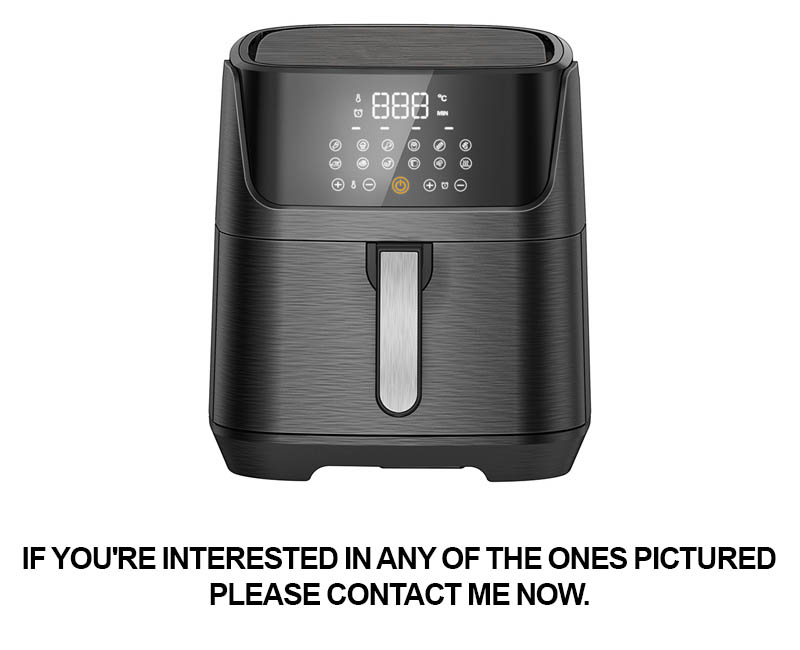
In a world where technological advancements are reshaping industries at a rapid pace, the kitchen appliances sector is no exception. With innovations pushing the boundaries of what’s possible, the rise of extreme kitchen appliances has become a topic of significant interest. These cutting-edge devices are not just designed to handle the everyday demands of cooking, but to thrive in environments where the ordinary appliances fail. Let’s delve into the features, real-world applications, and the broader implications of this new wave of cold-resistant kitchen appliances.
In the ever-evolving landscape of kitchen technology, a new wave of extreme kitchen appliances is emerging, designed to withstand the harshest conditions. These innovative gadgets are not just for the wealthy or the eccentric; they’re becoming a necessity for those who live in regions where temperatures plummet to freezing or below.
The extreme cold-resistant models, such as the much-talked-about -30°C cold resistant model, are a testament to the industry’s commitment to pushing boundaries. These appliances are not just built to last; they are built to thrive in environments where traditional kitchen gear would falter.
As the world grows more connected, and people migrate to remote or extreme climates, the demand for reliable kitchen appliances that can handle sub-zero temperatures has surged. From arctic research stations to mountain retreats, these appliances are becoming indispensable.
The design and engineering behind these cold-resistant models are nothing short of remarkable. They incorporate advanced materials and cutting-edge technology to ensure that they can operate efficiently at temperatures that would send most electronics into shutdown mode. The -30°C cold resistant model, in particular, boasts a unique thermal insulation system that maintains optimal performance even in the most frigid settings.
The materials used in these appliances are not only resistant to cold but also to corrosion and moisture, which are common issues in extreme climates. This durability is not just a selling point; it’s a necessity for consumers who rely on their kitchen appliances to function day in and day out.
One of the standout features of the -30°C cold resistant model is its ability to maintain a consistent temperature, regardless of the external conditions. This is crucial for those who need to store perishable goods, as the appliance ensures that food stays fresh and safe to eat, even when the mercury drops.
The market for these extreme kitchen appliances is not limited to a specific demographic. Outdoor enthusiasts, survivalists, and anyone living in areas prone to severe winters are increasingly turning to these specialized products. The convenience and peace of mind they provide are hard to overlook.
Innovation in the kitchen appliance industry is not just about making existing products more efficient; it’s about creating solutions for specific challenges. The -30°C cold resistant model is a prime example of how technology can adapt to meet the needs of a diverse and demanding consumer base.
One of the key drivers behind the rise of extreme kitchen appliances is the growing awareness of energy efficiency. As consumers become more environmentally conscious, they seek appliances that not only perform well but also minimize their carbon footprint. The cold-resistant models are designed with energy-saving features that reduce utility bills and contribute to a greener lifestyle.
Another factor fueling this trend is the integration of smart technology. Many of these appliances come with Wi-Fi connectivity and smartphone apps, allowing users to monitor and control them remotely. This level of convenience is particularly appealing to those who may not be able to physically reach their kitchen appliances during extreme weather conditions.
The industry’s focus on extreme kitchen appliances has also led to the development of new standards and certifications. Manufacturers are now required to adhere to stringent testing protocols to ensure that their products can indeed withstand the cold. This has not only raised the bar for product quality but has also given consumers a reliable way to identify truly cold-resistant appliances.
As the popularity of extreme kitchen appliances continues to grow, we can expect to see even more innovations in the future. From improved insulation to more energy-efficient designs, the potential for advancement is vast. The -30°C cold resistant model is just the beginning, and it’s a glimpse into what the future of kitchen technology might hold.
In conclusion, the rise of extreme kitchen appliances like the -30°C cold resistant model is a response to the changing needs of consumers. As our world becomes more diverse and our climates more unpredictable, these appliances are not just a luxury; they are a necessity for those who choose to live at the edge of their environments. The industry’s ability to adapt and innovate will undoubtedly continue to shape the landscape of kitchen technology for years to come.

In a world where the kitchen is no longer just a place for warmth and comfort, we’re witnessing a fascinating shift towards appliances designed to withstand the harshest conditions. Enter the -30°C Cold Resistant Model, a game-changer for those who cook in extreme climates.
This innovative appliance is not just a kitchen gadget; it’s a testament to modern engineering that has managed to merge functionality with resilience. Engineered with cutting-edge materials, the -30°C Cold Resistant Model is designed to maintain optimal performance even in frigid temperatures.
The exterior of the appliance is a marvel in itself, featuring a sleek, durable design that not only looks modern but also serves a practical purpose. The materials used are not only resistant to extreme cold but also to scratches and dents, ensuring that the appliance remains as good as new even after years of use.
Inside, the technology is equally impressive. The internal components are insulated to prevent frost buildup and to maintain the appliance’s temperature, regardless of the external environment. This means that whether you’re prepping meals in a sub-zero basement or cooking on a snowy balcony, the -30°C Cold Resistant Model is ready to perform.
One of the standout features of this model is its advanced heating system. Unlike traditional appliances that struggle to maintain a consistent temperature in cold conditions, the -30°C Cold Resistant Model incorporates a smart heating element that adapts to the environment, ensuring that cooking times and energy consumption are optimized.
The controls are intuitive and easy to use, even with gloves on, a necessity in extreme cold environments. The digital display is clear and bright, making it simple to monitor cooking times and temperatures, no matter how chilly the air outside.
For those who love to bake, the -30°C Cold Resistant Model offers a specialized oven setting that allows for consistent baking temperatures, even in the coldest of climates. This feature is particularly appreciated by bakers who can now enjoy their favorite pastries and breads without worrying about the cold affecting their rise or texture.
The refrigerator section of the appliance is also a marvel. It features a powerful cooling system that not only keeps your groceries fresh but also ensures that ice cream and frozen foods remain solid, no matter how low the outdoor temperatures dip.
In terms of energy efficiency, the -30°C Cold Resistant Model is a leader. It’s designed to minimize energy consumption while providing maximum performance. The appliance uses smart technology to detect when it’s not in use and automatically adjusts its energy consumption, making it a cost-effective choice for those who live in cold climates.
Safety is another key consideration. The -30°C Cold Resistant Model is equipped with multiple safety features, including overheat protection, child lock mechanisms, and an auto shut-off function. These features provide peace of mind, knowing that the appliance is designed to keep you and your family safe.
The design of the -30°C Cold Resistant Model is not just about functionality; it’s also about aesthetics. The appliance comes in a variety of finishes, allowing it to blend seamlessly into any kitchen decor, from rustic to ultra-modern.
In terms of maintenance, the -30°C Cold Resistant Model is a breeze. Its easy-to-clean surfaces and self-cleaning features mean that you can spend less time on chores and more time enjoying your time in the kitchen.
The introduction of the -30°C Cold Resistant Model is a significant step forward for the kitchen appliance industry. It represents a commitment to innovation, quality, and the needs of consumers who live in extreme climates. As the world continues to experience more varied and challenging weather patterns, appliances like this one are not just welcome additions to homes; they’re essential tools for modern living.
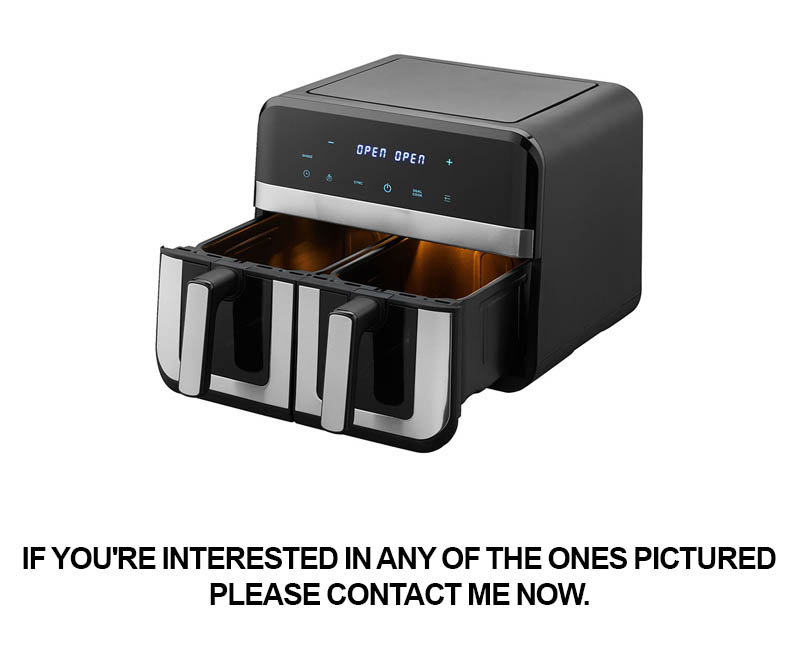
In the world of kitchen appliances, the quest for efficiency and reliability knows no bounds, especially when it comes to extreme environments. The need for cold resistance in kitchen appliances has grown significantly, driven by a variety of factors that span from geographical location to technological advancements.
The relentless march of climate change has led to more frequent and severe cold spells, affecting regions that were once considered temperate. This shift has made it imperative for appliances to withstand temperatures far below freezing, ensuring that they remain functional and safe in frigid conditions.
Moreover, the expansion of luxury homes and vacation properties in remote, cold-weather destinations has created a demand for appliances that can endure harsh winters. From ski lodges to polar research stations, the need for reliable kitchen technology in extreme climates is undeniable.
High-altitude living also contributes to the necessity of cold-resistant appliances. As elevations increase, temperatures plummet, and the air becomes thinner, traditional appliances may struggle to maintain performance. Cold resistance ensures that these appliances can operate efficiently, even in the thin air and extreme cold found at higher elevations.
In some regions, the cold season is not just a seasonal challenge but a year-round reality. For homeowners in these areas, appliances that can handle freezing temperatures are not a luxury but a necessity. They must be able to function without interruption, from the coldest winter days to the chilliest spring nights.
Energy efficiency is another key driver behind the need for cold resistance. Appliances that can maintain their performance in cold conditions often consume less energy, which is particularly important in areas where heating costs can be exorbitant. By reducing energy consumption, these appliances help homeowners save money and reduce their carbon footprint.
The health and safety of consumers are paramount, and cold-resistant appliances address this concern directly. Freezing temperatures can lead to the growth of harmful bacteria, so appliances that can operate effectively in the cold help prevent foodborne illnesses. Additionally, appliances that can handle extreme cold are less likely to malfunction, reducing the risk of accidents in the kitchen.
Modern kitchens are not just places for cooking; they are hubs of entertainment and socializing. In cold climates, these spaces are often used year-round, and having appliances that can withstand the cold without compromising on style or functionality is crucial. Cold resistance allows for seamless integration of kitchen technology into any design, regardless of the climate.
The rise of smart kitchen technology has also played a role in the demand for cold resistance. Smart appliances can offer remote monitoring and control, but in extreme cold, they must be able to communicate effectively and operate reliably. Cold-resistant models ensure that homeowners can manage their kitchen technology no matter where they are, providing convenience and peace of mind.
Finally, the longevity of kitchen appliances is a significant factor. In cold environments, appliances are subjected to more wear and tear due to the demands placed on them. Cold-resistant models are designed to withstand these challenges, leading to longer-lasting appliances that reduce the need for frequent replacements.
In conclusion, the need for cold resistance in kitchen appliances is multifaceted, encompassing environmental changes, lifestyle shifts, health concerns, energy efficiency, and technological advancements. As the world continues to face the challenges of extreme weather and high-altitude living, the demand for appliances that can thrive in these conditions will only grow, ensuring that kitchens remain warm and welcoming, no matter how cold it gets outside.
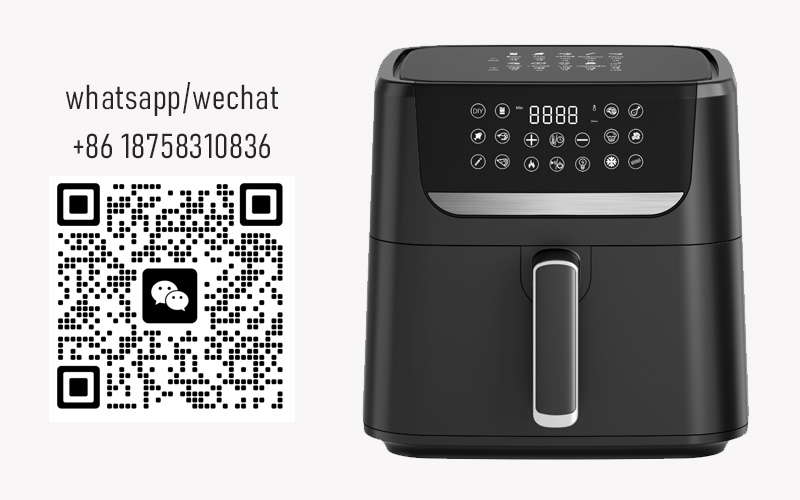
The -30°C Cold Resistant Model is a marvel of modern kitchen appliance engineering, designed to withstand some of the harshest conditions on Earth. Here’s a closer look at its standout features:
Robust ConstructionThe model boasts a sturdy, all-weather exterior that can endure temperatures plummeting to -30°C. The outer shell is made from high-grade, thermally insulating materials that prevent cold air from seeping in and internal heat from escaping.
Advanced InsulationInsulation is paramount in a cold-resistant appliance, and this model doesn’t disappoint. It features multiple layers of insulation, including a vacuum-insulated layer that minimizes heat loss and maintains optimal operating temperatures even in the coldest environments.
Energy-Efficient ComponentsEvery component inside the -30°C Cold Resistant Model is chosen for its energy efficiency. The refrigerator, for example, uses an inverter compressor that adjusts its speed based on the cooling needs, reducing energy consumption and noise levels.
Intelligent ThermostatThe appliance is equipped with an intelligent thermostat that precisely controls the internal temperature. It can be programmed to maintain specific temperatures, ensuring that food stays fresh and safe to consume, regardless of the external cold.
Enhanced Security FeaturesSecurity is a top priority in this model. It includes features like child lockouts and temperature sensors that trigger alarms if the appliance is left open or if there’s a sudden drop in temperature, protecting both the contents and the user.
Easy-to-Use InterfaceDespite its advanced technology, the -30°C Cold Resistant Model is designed with ease of use in mind. The control panel is intuitive, featuring a clear display and easy-to-navigate buttons. Users can also control the appliance remotely via a smartphone app.
Quiet OperationNo one wants a noisy kitchen, especially in a cold climate where the chill can be overwhelming. This model is engineered to operate silently, thanks to its efficient compressor and sound-dampening materials.
Anti-Freeze ProtectionTo prevent ice buildup on the exterior and interior, the -30°C Cold Resistant Model includes an anti-freeze system. This feature keeps the appliance functioning smoothly, even when exposed to sub-zero temperatures for extended periods.
Eco-Friendly DesignThe appliance is not just built to withstand extreme cold but also to be environmentally friendly. It uses environmentally friendly refrigerants and is designed for easy recycling at the end of its lifespan.
Durable and Long-LastingBuilt to last, the -30°C Cold Resistant Model is constructed with high-quality materials that ensure durability. The hinges, handles, and door seals are all designed to withstand the rigors of cold temperatures and frequent use.
Flexible Storage SolutionsThe interior of the model offers versatile storage options, including adjustable shelves and bins. This allows users to organize their food items efficiently, maximizing space and making it easy to find what they need.
Maintenance-Free OperationWith its advanced design, the -30°C Cold Resistant Model requires minimal maintenance. The self-cleaning feature ensures that the appliance stays clean and efficient without the need for frequent cleaning or descaling.
Smart ConnectivityThe model is future-proof with its smart connectivity options. It can be integrated into a home automation system, allowing users to monitor and control their kitchen appliances remotely, adding convenience and peace of mind.
Customizable SettingsUsers can tailor the appliance to their specific needs with customizable settings. Whether it’s adjusting the cooling speed or setting specific temperature ranges for different types of food, the -30°C Cold Resistant Model offers flexibility.
Premium FinishFinally, the model comes with a premium finish that not only looks sleek but also stands up to the demands of a cold climate. The exterior is resistant to scratches and dents, maintaining its appearance over time.
The -30°C Cold Resistant Model is a testament to innovation and engineering prowess, providing users with a reliable and efficient kitchen appliance that can thrive in the coldest of conditions.

In the rugged landscapes of Alaska, the -30°C Cold Resistant Model stands as a beacon of innovation, providing functionality in the harshest of environments. From the icy tundra to the snow-covered terraces of European chalets, this kitchen appliance is a game-changer.
In polar regions, the demand for reliable appliances is paramount. The -30°C Cold Resistant Model is designed to withstand extreme temperatures, ensuring that meals can be prepared without the fear of malfunction. This has been a lifesaver for many Arctic researchers and remote community dwellers who rely on consistent access to cooking facilities.
The rugged outdoors is not the only place where this model excels. Mountain retreats in the Swiss Alps and the Scandinavian forests are equipped with this appliance, allowing homeowners to enjoy the comfort of a well-equipped kitchen at altitudes where the air is thin and temperatures plummet.
For those who enjoy outdoor activities such as skiing, snowboarding, or even snowmobiling, the -30°C Cold Resistant Model is a must-have. Whether it’s preparing a hearty breakfast before hitting the slopes or cooking a nutritious meal after a long day of adventure, this appliance is designed to handle the chill.
In remote logging camps, where traditional kitchen appliances struggle to survive, the -30°C Cold Resistant Model thrives. The ability to cook, defrost, and store food in sub-zero conditions is invaluable for workers who spend months away from the warmth of their homes.
Cruise ships and yachts often find themselves navigating through icy waters, and the -30°C Cold Resistant Model is a staple on these vessels. It ensures that crew and passengers can dine comfortably, no matter how cold the sea gets.
The model’s versatility is also evident in its use by military personnel. From Arctic bases to high-altitude outposts, these appliances provide a level of independence and comfort that is crucial for the well-being of service members.
Even in the most unexpected of places, like research stations on remote islands, the -30°C Cold Resistant Model is a welcome sight. It allows scientists to conduct their work uninterrupted, providing a stable environment for food preparation and storage.
In urban settings, the -30°C Cold Resistant Model has also found its place. Apartment dwellers who live in cold-weather climates appreciate the reliability of this appliance, which can handle the occasional cold snap without missing a beat.
For eco-conscious consumers, the model’s energy-efficient design is a bonus. It operates effectively without drawing excessive power, making it a green choice for those looking to reduce their carbon footprint.
The -30°C Cold Resistant Model’s real-world applications span across various industries and lifestyles. From the extreme to the everyday, its ability to perform in the face of extreme cold is a testament to modern engineering and the relentless pursuit of convenience in all conditions.
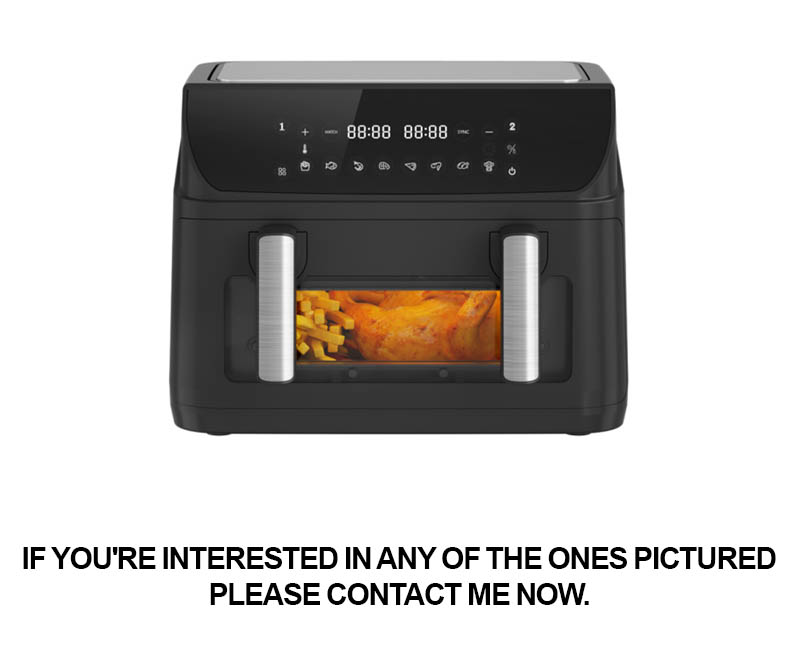
In the evolving landscape of kitchen appliances, several trends are reshaping the industry, offering valuable insights into where the market is heading. The integration of smart technology, the emphasis on energy efficiency, and the demand for durable and versatile appliances are just a few of the key dynamics at play.
Smart Integration Revolutionizing Kitchen SpacesModern kitchens are no longer just cooking areas; they are smart hubs. The rise of smart appliances that can be controlled remotely or through voice commands has transformed the way we interact with our kitchen tools. From smart refrigerators that track food spoilage to ovens that can be preheated via a smartphone, the industry is witnessing a seamless blend of technology and culinary efficiency.
Energy Efficiency as a PriorityAs environmental concerns grow, so does the importance of energy-efficient appliances. Consumers are increasingly looking for products that not only perform well but also minimize their carbon footprint. This shift is prompting manufacturers to innovate in areas such as improved insulation, energy-saving modes, and more efficient motors, all aimed at reducing energy consumption and lowering utility bills.
Durability and Versatility in DemandThe kitchen appliances market is seeing a trend towards durability and versatility. Homeowners are seeking appliances that can withstand the test of time and can be used for a variety of tasks. Multi-functional appliances that can bake, roast, and broil in one unit, or dishwashers that can handle a range of cleaning challenges, are becoming more popular. This trend reflects a desire for long-term investment and a reduction in the need for frequent replacements.
Health and Wellness Influencing Appliance ChoicesHealth and wellness are at the forefront of consumer appliance preferences. People are more conscious of what they put into their bodies, and this extends to the appliances they use to prepare food. The demand for appliances that can provide healthier cooking options, such as steam ovens and air fryers, is on the rise. Additionally, features like non-toxic materials and easy-to-clean surfaces are becoming increasingly important.
Customization and Personalization on the RiseThe kitchen appliance market is becoming more personalized. Manufacturers are offering a wider range of styles, colors, and finishes to cater to individual tastes. Customizable settings and programmable functions are also becoming standard, allowing users to tailor their appliances to their specific needs and preferences. This shift is part of a broader consumer trend towards personalization in all aspects of life.
Sustainability and Eco-Friendly PracticesSustainability is not just a buzzword; it’s a driving force in the appliance industry. Companies are focusing on sustainable materials, manufacturing processes that reduce waste, and products that are designed for longevity. The rise of the circular economy is also influencing the market, with a growing number of appliances being designed for disassembly and recycling.
Globalization and Cultural InfluencesThe kitchen appliance market is becoming more globalized, with cultural influences shaping product design and consumer preferences. For example, the popularity of Asian-inspired kitchen gadgets and appliances has grown, as has the demand for European-style ovens and cooktops. This cultural exchange is leading to a more diverse and dynamic market landscape.
Regulatory Changes and Safety StandardsRegulatory changes and safety standards continue to impact the appliance industry. As governments around the world impose stricter regulations on energy consumption and emissions, manufacturers must adapt their products to meet these requirements. This not only ensures compliance but also drives innovation in energy-efficient and environmentally friendly designs.
E-commerce and Direct-to-Consumer SalesThe rise of e-commerce has changed how consumers purchase kitchen appliances. Online marketplaces offer a vast array of options and competitive pricing, often allowing for direct-to-consumer sales. This shift has given consumers more control over their purchasing decisions and has opened up new opportunities for manufacturers to reach a wider audience.
In conclusion, the kitchen appliance industry is experiencing a multifaceted evolution, driven by technological advancements, environmental concerns, consumer preferences, and global influences. These trends and insights provide a glimpse into the future of kitchen appliances, where innovation and sustainability will likely continue to be key drivers of market growth.
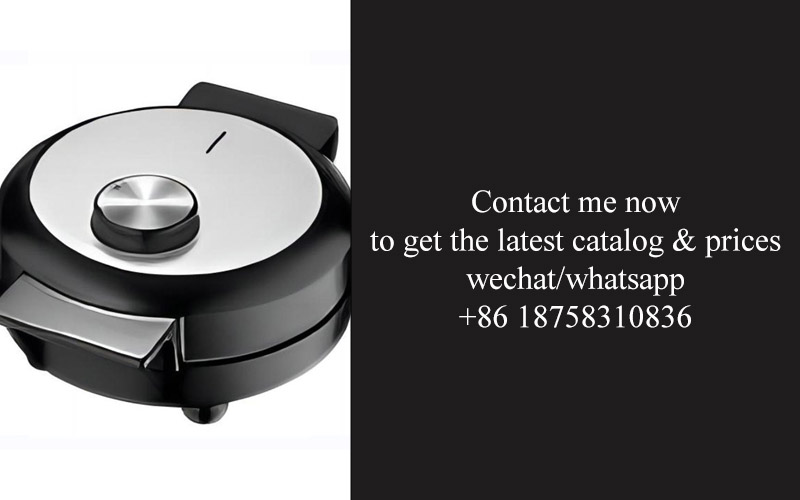
Enduring Performance: The appliance’s ability to maintain peak functionality at -30°C offers peace of mind for consumers in extreme climates, ensuring their daily routines remain uninterrupted by harsh winter conditions.
Enhanced Safety: With materials and components specifically designed to withstand extreme cold, the -30°C model minimizes the risk of appliance failures or malfunctions that could lead to accidents or damage to the home.
Cost-Effective: Despite its specialized engineering, the -30°C model is designed to be energy-efficient, helping consumers save on utility bills while still enjoying the benefits of a reliable kitchen appliance.
Customizable Comfort: The model often comes with features that allow users to tailor the appliance to their specific needs, whether it’s adjusting temperature settings for delicate ingredients or programming for optimal usage times.
Versatility: The -30°C cold resistant model isn’t just for extreme weather; it’s a versatile choice for any kitchen, offering the same high-quality performance regardless of the climate.
Longevity: By being able to operate in extreme temperatures, the appliance is likely to have a longer lifespan than its standard counterparts, reducing the frequency of replacements and saving money over time.
User-Friendly Design: Despite its advanced technology, the -30°C model is designed with user experience in mind, featuring intuitive interfaces and ergonomic controls that make it easy for anyone to use.
Brand Reputation: Owning a -30°C cold resistant model can enhance the user’s perception of the brand, signaling a commitment to quality and innovation, which can be a strong selling point for consumers.
Health Benefits: In regions where extreme cold can affect food preservation, the -30°C model ensures that perishable items remain safe to eat, reducing the risk of foodborne illnesses.
Community Impact: The widespread adoption of -30°C cold resistant appliances can have a positive ripple effect on local communities, making it easier for everyone to maintain their daily needs during challenging weather conditions.
Sustainability: With the increasing focus on sustainability, appliances that can operate in extreme conditions without compromising energy efficiency align with eco-conscious consumer values.
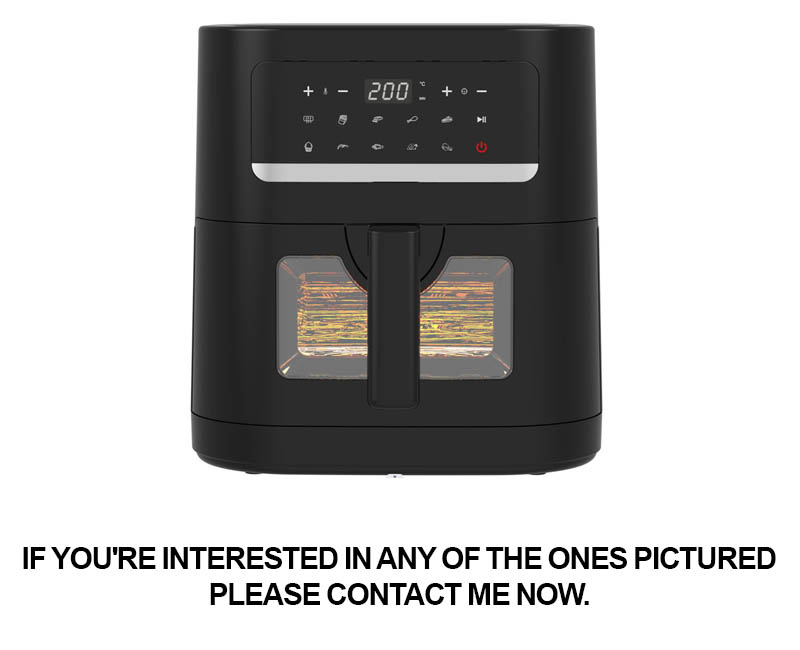
In today’s eco-conscious world, the environmental impact of products, including kitchen appliances, is a critical factor for consumers. The -30°C Cold Resistant Model, in particular, brings to light several significant environmental considerations:
The Energy Efficiency FactorThis cold-resistant appliance is designed with energy efficiency in mind. By maintaining its optimal performance even in extreme cold, it reduces the need for additional heating or cooling, thereby lowering energy consumption. This not only saves money on utility bills but also contributes to a smaller carbon footprint.
Reduced EmissionsTraditional kitchen appliances often struggle to perform in cold environments, leading to increased energy usage and potentially higher emissions. The -30°C Cold Resistant Model, however, operates smoothly at low temperatures, reducing the amount of greenhouse gases released into the atmosphere.
Sustainable MaterialsThe materials used in the construction of the -30°C Cold Resistant Model are carefully chosen to be environmentally friendly. From recycled metals to biodegradable plastics, the appliance’s design reflects a commitment to sustainability, making it a greener choice for environmentally conscious consumers.
Longevity and DurabilityDurability is not just about the appliance’s performance but also about its lifecycle. The -30°C Cold Resistant Model is built to last, which means fewer appliances end up in landfills. By extending the life of the product, it reduces the demand for new appliances and the associated environmental impact.
Efficient Production ProcessesThe manufacturing process of the -30°C Cold Resistant Model emphasizes efficiency. From reducing waste during production to using energy-efficient machinery, the company behind this appliance is mindful of the environmental impact of its production line.
Smart Technology IntegrationThe inclusion of smart technology in the -30°C Cold Resistant Model allows for remote monitoring and control, which can optimize energy usage. By allowing users to monitor their appliance’s performance and schedule tasks efficiently, smart features contribute to lower energy consumption and environmental benefits.
Water ConservationIn regions where water is scarce or treated with chemicals to prevent freezing, the -30°C Cold Resistant Model can be a game-changer. By operating effectively in cold conditions, it ensures that water is conserved, reducing the strain on local water resources and minimizing the environmental impact of water treatment processes.
Zero Waste PolicyThe manufacturer of the -30°C Cold Resistant Model has adopted a zero waste policy. Any leftover materials from production are recycled or repurposed, ensuring that the environmental impact of manufacturing is minimized.
Community InvolvementThe company producing the -30°C Cold Resistant Model is also involved in community initiatives aimed at environmental conservation. By supporting local projects and organizations focused on sustainability, the company demonstrates its commitment to reducing its environmental footprint beyond the product itself.
Global Warming and Climate ChangeThe -30°C Cold Resistant Model’s ability to perform in extreme cold is a testament to the changing climate. By being adaptable to a wider range of temperatures, it reflects a broader shift in how appliances are designed and produced to account for the impacts of global warming and climate change.
The -30°C Cold Resistant Model’s environmental impact is multifaceted, encompassing energy efficiency, sustainable materials, longevity, and community involvement. As consumers become more aware of the environmental consequences of their purchases, such innovative appliances will likely become increasingly popular, driving further industry-wide changes towards sustainability.
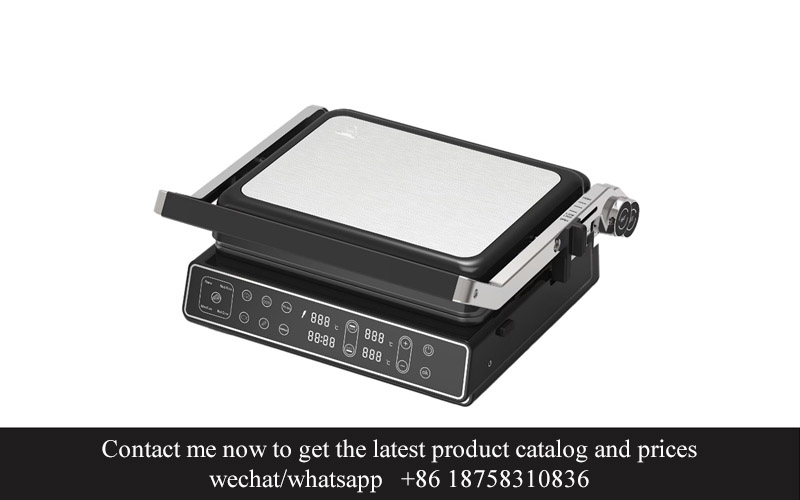
In the realm of kitchen appliances, the insights from industry experts reveal a landscape that’s evolving with the demands of consumers and the challenges of our environment. Here’s a glimpse into the expert analysis that shapes the future of the industry.
The integration of smart technology has become a cornerstone in modern appliances, offering users convenience and efficiency. Experts note that the ability to control kitchen appliances remotely via smartphones is not just a novelty but a necessity for those with busy lifestyles or those who wish to manage their kitchen environment from afar.
Energy efficiency is a topic of paramount importance, with experts emphasizing that appliances that consume less power can significantly reduce utility bills and lower the carbon footprint. This shift towards energy-saving models is being driven by both regulatory changes and consumer awareness of environmental sustainability.
Innovation in materials science is reshaping the industry, with experts pointing out that the use of durable and sustainable materials is no longer just a selling point but a standard expectation. The emphasis on materials that are recyclable or biodegradable reflects a growing demand for eco-friendly products.
The rise of the “Internet of Things” (IoT) in kitchen appliances is a trend that experts are closely watching. This integration allows for appliances to communicate with each other and with users, leading to greater automation and predictive maintenance. Experts believe that this will not only improve the user experience but also help to reduce waste and optimize appliance performance over time.
The customization of kitchen appliances is another area of interest. Experts note that the ability to tailor appliances to individual preferences and kitchen layouts is becoming more common, allowing consumers to create a kitchen that is as unique as their home. This could include everything from adjustable oven racks to modular refrigerators that can be reconfigured to fit different spaces.
Safety is a constant concern, and experts highlight the importance of advanced safety features in appliances. This includes everything from child locks and anti-tip mechanisms to smart sensors that can detect leaks or fires. The industry is seeing a push towards appliances that not only protect users but also prevent accidents before they happen.
The globalization of the kitchen appliance market has also been a point of discussion among experts. As appliances become more standardized, they are being exported to new markets around the world. This has led to a greater emphasis on universal design and compatibility with different power sources and voltages.
In terms of marketing and sales, experts are noting a shift towards more transparent and ethical practices. Consumers are increasingly interested in knowing where their products come from and how they are made, leading to a rise in certifications and labeling that provide this information.
The integration of health and wellness into kitchen appliances is another trend that experts are analyzing. From appliances that can help track dietary intake to those that offer nutritional advice, there is a growing awareness of the role that kitchen appliances play in overall health and well-being.
Lastly, experts are keeping an eye on the regulatory landscape. Changes in standards and certifications can have a significant impact on the industry, and staying ahead of these changes is crucial for appliance manufacturers. Compliance with new regulations is not just a legal requirement but also a competitive advantage in a market that is becoming more environmentally and socially conscious.
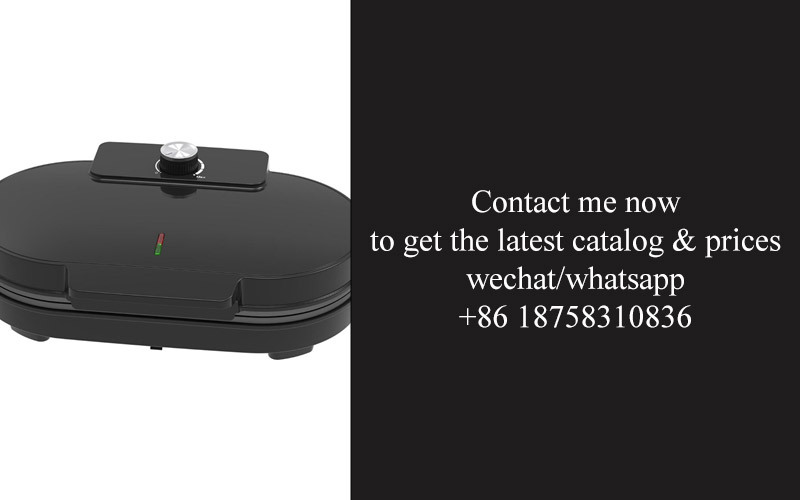
The evolution of technology has opened doors to new possibilities, and the future of kitchen appliances is no exception. As we delve into the prospects that lie ahead, several key factors are shaping the trajectory of innovation and consumer expectations.
Innovative Materials and DesignMaterials science is advancing at a rapid pace, and this has a direct impact on the durability and efficiency of kitchen appliances. The integration of advanced materials like graphene and ceramic composites could lead to appliances that are not only more resistant to extreme temperatures but also lighter and more energy-efficient. These materials could redefine the aesthetics and functionality of kitchen appliances, making them not just tools but pieces of art that complement the home’s environment.
Smart IntegrationThe Internet of Things (IoT) is expected to play a significant role in the future of kitchen appliances. Smart integration means appliances that can communicate with each other and with the homeowner, providing personalized experiences and enhanced convenience. Imagine a fridge that not only keeps your food fresh but also suggests recipes based on the ingredients you have, or an oven that can be controlled remotely to preheat before you arrive home.
Energy Efficiency and SustainabilityAs environmental concerns grow, the energy efficiency of kitchen appliances is becoming a more critical factor. The future may see appliances that are powered by renewable energy sources, such as solar or wind, and designed with sustainability in mind. This shift will not only reduce the carbon footprint of households but also lower energy bills and promote a greener lifestyle.
Customization and PersonalizationThe future of kitchen appliances will likely offer more options for customization and personalization. With advancements in 3D printing, customers could have appliances tailored to their specific needs and preferences. This could range from unique shapes and sizes to specific functionalities that cater to specific dietary requirements or cooking styles.
Health and Wellness IntegrationHealth and wellness are becoming increasingly important in the consumer market. Future kitchen appliances may not only focus on preparing food but also on its nutritional content. Imagine an appliance that can analyze the nutritional value of your ingredients and suggest healthier cooking methods. This could include features like built-in blenders with pre-programmed smoothie recipes or an oven that automatically adjusts cooking times to optimize nutrient retention.
Interactive and Educational FeaturesThe future kitchen appliance could be a hub of interactive and educational experiences. With touchscreens and voice control, appliances might offer cooking tutorials, dietary advice, and even health monitoring. These appliances could become not just tools but educational companions, helping families learn about nutrition and cooking in a fun and engaging way.
Economic Shifts and AccessibilityAs technology advances, the cost of kitchen appliances is expected to decrease, making them more accessible to a broader market. This could lead to a shift in consumer behavior, with more people investing in high-tech kitchen equipment that enhances their lifestyle. Additionally, the rise of subscription models could offer customers the flexibility to upgrade their appliances as new technologies emerge without the need for a complete replacement.
Collaboration and PartnershipsThe future of kitchen appliances may also see more collaboration between appliance manufacturers and tech companies. This partnership could lead to innovative solutions that blend the best of both worlds, offering cutting-edge technology and practical functionality. Such collaborations might result in appliances that can be integrated with other smart home devices, creating a seamless and cohesive living environment.
Adaptability to Global MarketsWith the global population becoming more diverse, kitchen appliances of the future will need to cater to a wide range of culinary traditions and preferences. This adaptability will require a deep understanding of different cultural cooking methods and dietary habits, ensuring that appliances are not just universally appealing but also respectful of diverse culinary heritages.
In conclusion, the future of kitchen appliances is a landscape of continuous innovation, where technology meets functionality, sustainability, and personalization. The path forward is filled with exciting possibilities that promise to revolutionize the way we interact with our kitchen tools and the food we prepare.